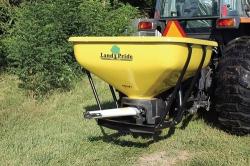The issue of when to fertilize depends on a variety of factors, most notably the type of grass you have planted on your lawn and the weather conditions you currently experience. By and large, it is important to remember that keeping to hard and fast rules with regard to fertilizing is dangerous; as with mowing and watering your lawn, being overly by the book in scheduling fertilizing can lead to feeding your lawn when it is unprepared. In the hopes of clearing up confusion over when to fertilize, this post offers both a broad overview of fertilizing dates and some tips for successful late summer and fall fertilizing.
Why fertilize in late summer or early fall?
By late August and early September, your lawn is suffering; by the end of a long summer, your grass has just completed a period of relative drought. At this time, injecting your lawn with a shot of nitrogen-based fertilize will go a long way toward facilitating grass growth before the fall.
Differences between cool-season grass and warm-season grass
It is important to remember that warm and cool-season grasses should be fertilized differently. For warm-season fertilizer, you want to give your grass a more robust feeding during late summer. This means that if your lawn has Bermudagrass or St. Augustine grass, late August and early September are ideal periods for a substantial feeding. On the other hand, if your lawn has cool-season grasses like bluegrass or fescue, it is best to wait until late fall before giving a more substantial feeding to your lawn. In October or November, use a phosphorous-based fertilizer, which will get your grass healthy before the winter arrives, allowing your lawn to grow more successfully when the spring arrives.
Tips for fertilizing
Before fertilizing, there are some tips to bear in mind. First, never fertilize if you are still experiencing a period of drought; your grass should have recently received water before it gets fed, and it is also important to fertilize immediately after fertilizing. Also remember to fertilize the edges of your lawn, and walk at a normal pace so as to apply your fertilizer at an even distribution. Finally, avoid overfertilizing; giving your lawn too much fertilizer causes the grass to grow too fast and makes it more likely that your lawn will become ridden with disease.
Fertilizing is one of the most important procedures you can do to stimulate growth and prepare your lawn for winter. As we move through late summer and into early fall, be mindful of the weather conditions and your grass species when deciding when to fertilize.

Comments
Post a Comment